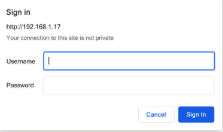Ever come across 192.168.1.17 and wondered if it’s important? Spoiler: it is—but it might not be what you think. Whether you’re trying to log into your router, tweak settings, or just wanna see who’s using your Wi-Fi, this IP is a good place to start.
What Exactly is 192.168.1.17?
Here’s the deal: 192.168.1.17 is a private IP address used within local networks. That means it won’t show up on the public internet, but it’s part of your inner circle of connected devices. Usually, it’s not the main IP for your router—but it can be, depending on your setup.
In most cases, this IP belongs to:
- A device like a phone, laptop, smart TV, etc.
- Or occasionally, your router’s login page
Try Logging In – Just to Be Sure
It doesn’t hurt to check, right?
- Make sure you’re connected to your home network
- Open a browser and type:
http://192.168.1.17 - If a login page shows up—boom! You’ve got access.
- Enter the default username and password (scroll down if you need help)

Default Router Login Credentials
If this IP leads to a router or modem login page, and you haven’t changed the login details, here are some common combos to try:
| Username | Password |
|---|---|
| admin | admin |
| admin | password |
| user | user |
Still locked out? Look for a sticker on the back or bottom of your router—it usually lists the login info there.
Didn’t Work? Here’s Why:
If nothing loads or you get an error, one of these might be the reason:
- The IP belongs to a device, not the router
- Your router uses a different IP (like 192.168.1.1 or 192.168.0.1)
- You’re not connected to the same Wi-Fi network
- Your browser’s being stubborn (try a different one)
To find the correct router IP:
- On Windows, open Command Prompt and type
ipconfig - Look under Default Gateway—that’s the one you want
Want to Know What Device is Using 192.168.1.17?
Could be your smart TV, someone’s iPhone, or even a sneaky neighbor. Wanna find out?
Use these network scanning tools:
- Fing (iOS & Android)
- Advanced IP Scanner (Windows)
- LanScan (Mac)
They’ll show you every device connected to your network—and help you sniff out intruders.
If It Is Your Router
Once you’re in the admin panel, here’s what you can do:
- Change Wi-Fi name and password
- Set up guest networks
- Block freeloaders
- Update your firmware
- Customize security settings
Basically, take control of your network like a boss.
Final Thoughts
Whether 192.168.1.17 is a router or just another gadget, now you know exactly how to handle it. Don’t leave your network on autopilot—stay in control, stay secure, and keep it running smooth.